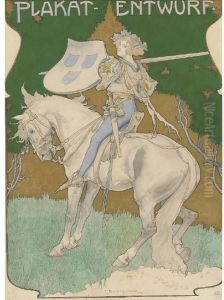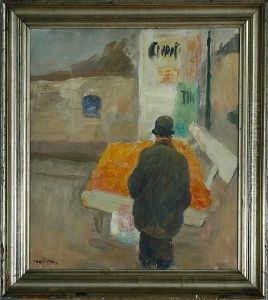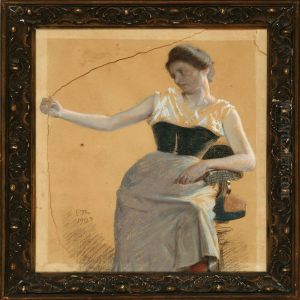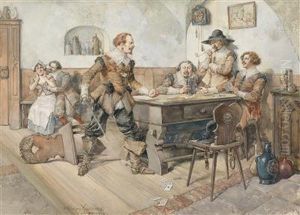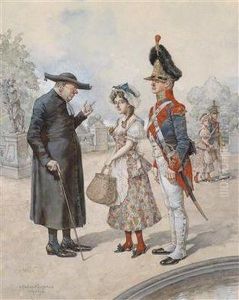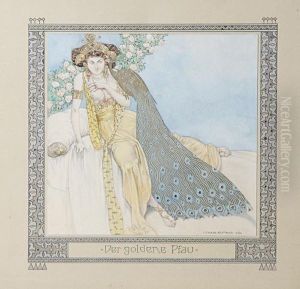Carl Fischer-Koystrand Paintings
Carl Fischer-Koystrand, born in 1879, was an Austrian artist whose work spans a variety of styles and mediums, reflecting the diverse artistic movements of the late 19th and early 20th centuries. While not as widely recognized as some of his contemporaries, Fischer-Koystrand made significant contributions to the art world, particularly in the realms of painting and illustration. His early life was marked by a rigorous education in the arts, studying under notable figures of the time, which laid a solid foundation for his diverse artistic career.
Fischer-Koystrand’s work is characterized by its eclectic nature, showcasing his ability to adapt and evolve with the changing artistic landscapes of his time. Throughout his career, he explored various movements such as Impressionism, Art Nouveau, and early Modernism, yet always maintained a unique personal style that defied strict categorization. His paintings often depicted scenes of everyday life, landscapes, and portraits, imbued with a sensitivity to light and color that gave his work a distinctive, emotive quality.
In addition to his paintings, Fischer-Koystrand was also renowned for his illustrations, contributing to books, magazines, and posters. His illustrations often reflected the Art Nouveau style, popular at the turn of the century, featuring intricate line work and elegant, flowing designs. This work helped to popularize the movement and contributed to its legacy.
Despite his artistic talents, Fischer-Koystrand’s career was not without its challenges. The tumultuous social and political climate of early 20th century Europe had a profound impact on the art world, leading to shifts in public taste and the financial viability of many artists. Nevertheless, Fischer-Koystrand continued to work and adapt, his art evolving in response to these external pressures.
Carl Fischer-Koystrand passed away in 1952, leaving behind a body of work that, while perhaps not as celebrated as some of his peers, offers a fascinating glimpse into the artistic transitions of his era. Today, his pieces can be found in various collections and museums, serving as a testament to his skill and versatility as an artist.
